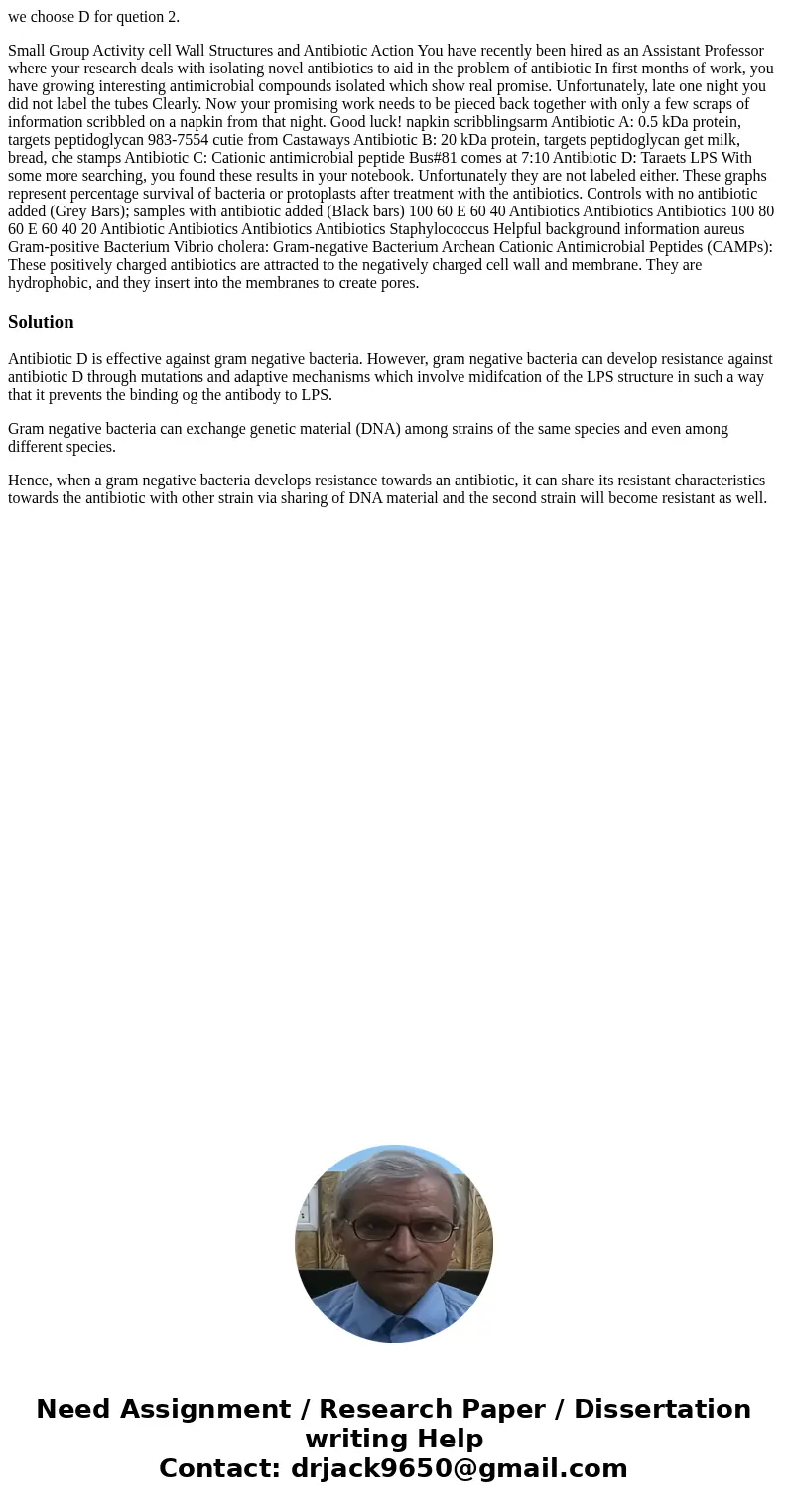we choose D for quetion 2 Small Group Activity cell Wall Str
we choose D for quetion 2.
Small Group Activity cell Wall Structures and Antibiotic Action You have recently been hired as an Assistant Professor where your research deals with isolating novel antibiotics to aid in the problem of antibiotic In first months of work, you have growing interesting antimicrobial compounds isolated which show real promise. Unfortunately, late one night you did not label the tubes Clearly. Now your promising work needs to be pieced back together with only a few scraps of information scribbled on a napkin from that night. Good luck! napkin scribblingsarm Antibiotic A: 0.5 kDa protein, targets peptidoglycan 983-7554 cutie from Castaways Antibiotic B: 20 kDa protein, targets peptidoglycan get milk, bread, che stamps Antibiotic C: Cationic antimicrobial peptide Bus#81 comes at 7:10 Antibiotic D: Taraets LPS With some more searching, you found these results in your notebook. Unfortunately they are not labeled either. These graphs represent percentage survival of bacteria or protoplasts after treatment with the antibiotics. Controls with no antibiotic added (Grey Bars); samples with antibiotic added (Black bars) 100 60 E 60 40 Antibiotics Antibiotics Antibiotics 100 80 60 E 60 40 20 Antibiotic Antibiotics Antibiotics Antibiotics Staphylococcus Helpful background information aureus Gram-positive Bacterium Vibrio cholera: Gram-negative Bacterium Archean Cationic Antimicrobial Peptides (CAMPs): These positively charged antibiotics are attracted to the negatively charged cell wall and membrane. They are hydrophobic, and they insert into the membranes to create pores.Solution
Antibiotic D is effective against gram negative bacteria. However, gram negative bacteria can develop resistance against antibiotic D through mutations and adaptive mechanisms which involve midifcation of the LPS structure in such a way that it prevents the binding og the antibody to LPS.
Gram negative bacteria can exchange genetic material (DNA) among strains of the same species and even among different species.
Hence, when a gram negative bacteria develops resistance towards an antibiotic, it can share its resistant characteristics towards the antibiotic with other strain via sharing of DNA material and the second strain will become resistant as well.

 Homework Sourse
Homework Sourse